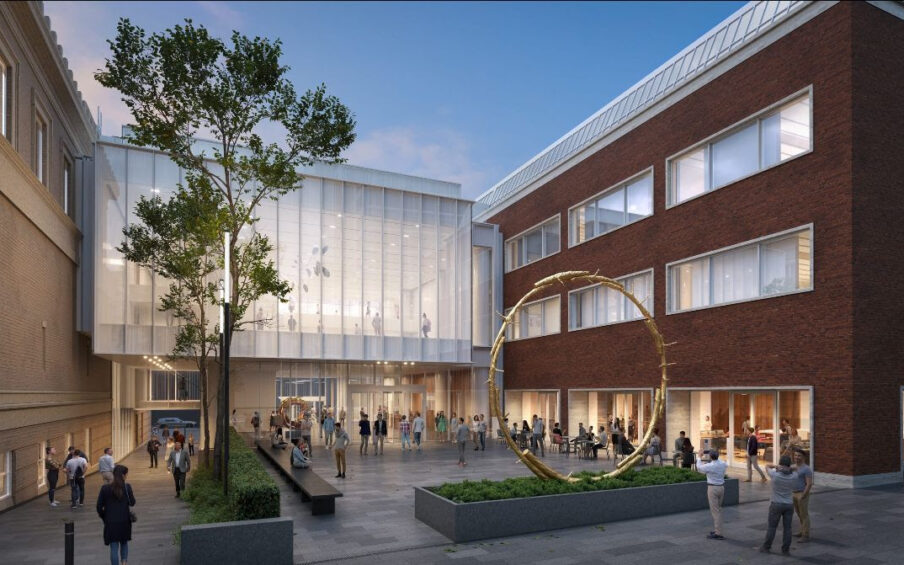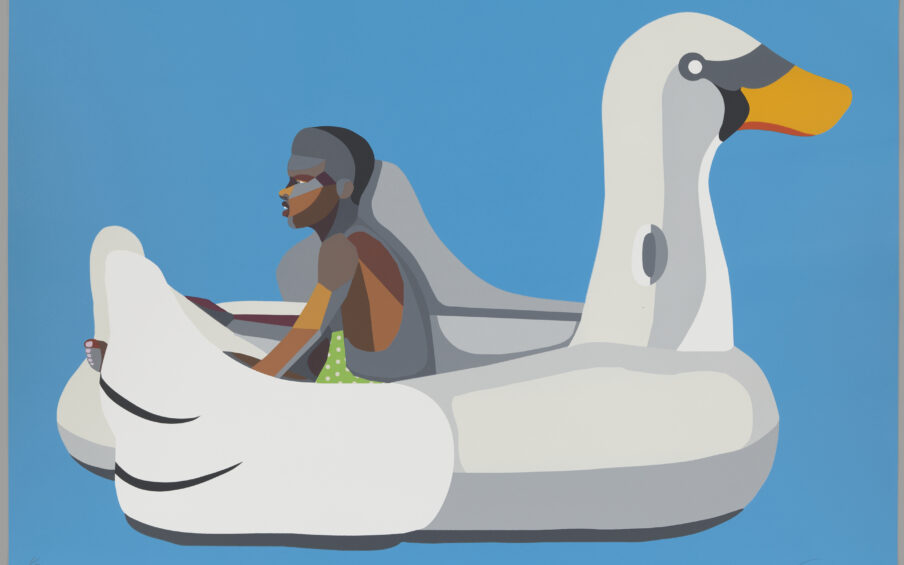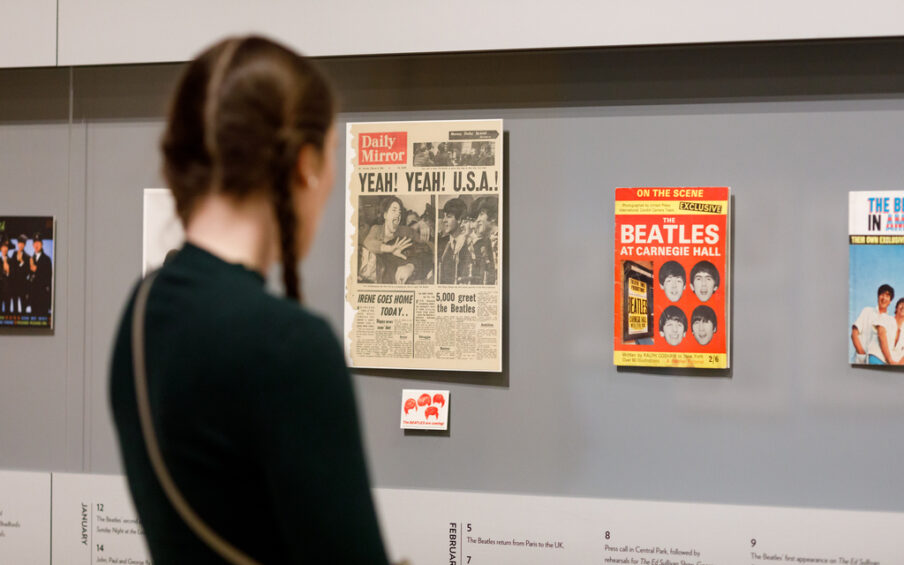On Saturday, March 11, a Karuk mother wearing a traditional woven baby carrier holding her child on her back was asked to remove it from her back in the middle of her visit to the Portland Art Museum. We deeply apologize that the rigid enforcement of one of our recently changed policies caused harm in this interaction and we are devastated that the family had a negative experience. It is clear that we have fallen short in our commitment to advancing racial equity and inclusion. We realize that we need to do better.
We have received hundreds of comments, emails, and phone calls about this and are actively learning. We understand that there is a great deal of anger and frustration which has been expressed by many people, especially those from Native communities, who are rightfully upset that this happened in our museum. The relationships between museums and Native Americans have been fraught for centuries and we have been in the process of building trust and fostering better connections. We have worked to welcome and involve Native people, makers, scholars and communities in our museum program and as visitors for many years. This incident set us back.
We want to share and respond to the most frequent questions we’ve received and outline our plans to address this internally and with our constituents.
What have you done to make this right?
- Our Director, Brian Ferriso, reached out to the visitor, and Kathleen Ash-Milby, our Curator of Native American art, was able to speak to her at length. We have invited the family back for a private visit and have offered the family a complimentary membership. Underscore News also interviewed the visitor and Ash-Milby.
- We changed the bag and backpack policy on March 14 as follows: “We kindly request that bags, backpacks, or items larger than 11″ x 17″ x 6″ be left outside the Museum. Babies in carriers are permitted. Other bags should be carried at your side or in front, and not worn on one’s back. All items are subject to inspection. We want our visitors to feel welcome and understand that exceptions may be appropriate. Please contact us in advance of your visit or request to speak to a Visitor Services Manager upon arrival with questions.”
- We are in the process of continuing to reach out to our local Native American community to engage in dialogue around this incident as well as hearing other steps we need to take to ensure a more inclusive museum for all. We have also been in communication with our Native Advisory Group, Native American board and staff members, and will be listening to our Native American constituents for guidance on the best path forward.
- We are working internally to address shortfalls in our staff bias awareness and other trainings (see more below).
I’ve seen photos circulated of visitors to PAM in the galleries wearing backpacks. Why were backpacks allowed before with no consequences? Why was this visitor singled out?
It is correct that in the past we were more lenient with backpacks in the galleries and that photos of visitors wearing backpacks prior to January 2023 are on our social media, website, and other places. There was even greater leniency when the state allowed us to reopen in July 2020, because visitors could not check any personal items due to COVID-19.
In January 2023, with coat check again operational and increasing security concerns and issues, our bag and backpack policy was tightened. We added size limitations and said that nothing was allowed to be carried on anyone’s back. A number of other visitor policies were also adjusted at that same time. We modified the bags and personal items policy on March 14, 2023, after realizing that it was far too narrow to offer flexibility for visitors.
In our first public communication about the March 11 incident, we did not offer this level of detail. This led to the perception that our policy always stated that nothing was allowed to be worn on the back by visitors to our galleries. Coupled with a bevy of images showing contrary experiences, including within our own posts, it appeared that this visitor was singled out because she was wearing a traditional Native baby carrier. This was not the case, though we understand why some thought it was. We also realize the changed policy and contrary images sent a mixed message.
What training will staff receive as a result of this event?
We need to equip staff at all levels with the kind of cultural sensitivity required for us to truly be welcoming. We have in the past, and will continue to offer trainings on bias awareness, anti-harassment, de-escalation, and an intensive course called “Reframing Racism: Language and Tools for Advancing Equity.” We know that we still have more work to do, and are committed to doing it.
We are engaging with a facilitator to bring a 4-part series meant to build the capacity of the Museum’s people managers to introduce strategies, tools and resources to support BIPOC staff and become familiar with structural, systemic and institutional realities perpetuating inequities and obstacles adversely impacting the experiences of BIPOC staff in the workplace and beyond.
Additionally, the Museum’s director is launching a working group of the equity team and other staff members to form a plan for an ongoing cultural sensitivity training that all staff would engage with, and new hires before they work with the public. We continue to partner with local facilitators to offer additional learning opportunities for staff in the interim.
Why were my comments on your social media removed? Why can’t I see comments my friends posted?
We received hundreds of comments on Facebook, Instagram, and Twitter, and the feedback is taken seriously. We stopped allowing new comments on the post on March 16 because the high volume was not manageable by our small staff. All comments published prior to March 16 are visible to the public. Comments made on Instagram after March 16 are not visible to the public but can be read by museum staff. We understand that the effect came across as silencing feedback. That was not our intention, but the bullying, harassment and hateful language became unmanageable. We are also required to follow legal guidelines to protect staff safety, including removing comments that included any personal information about staff. Comments will continue to be limited across all channels to ensure they meet our social media guidelines.
Was the visitor kicked out of the museum? Was the baby’s safety questioned by staff?
The visitor and their family chose to leave the museum after the upsetting interaction. The baby’s safety was never questioned.
What else are you doing to make amends with the Native American community?
Our museum and Native American communities have a complicated history, which we cannot separate from what happened. We’ve been working to establish connection and trust over several years. This was a major setback to our Native American art program and these relationships. We are seeking guidance from our Native American community partners, constituents, staff members, board members and Native Advisory Group for the best path forward beyond the steps outlined in this blog post. We know that there is no one thing that we can do to make this right for everyone.
This post may be updated to share additional information as it develops.


